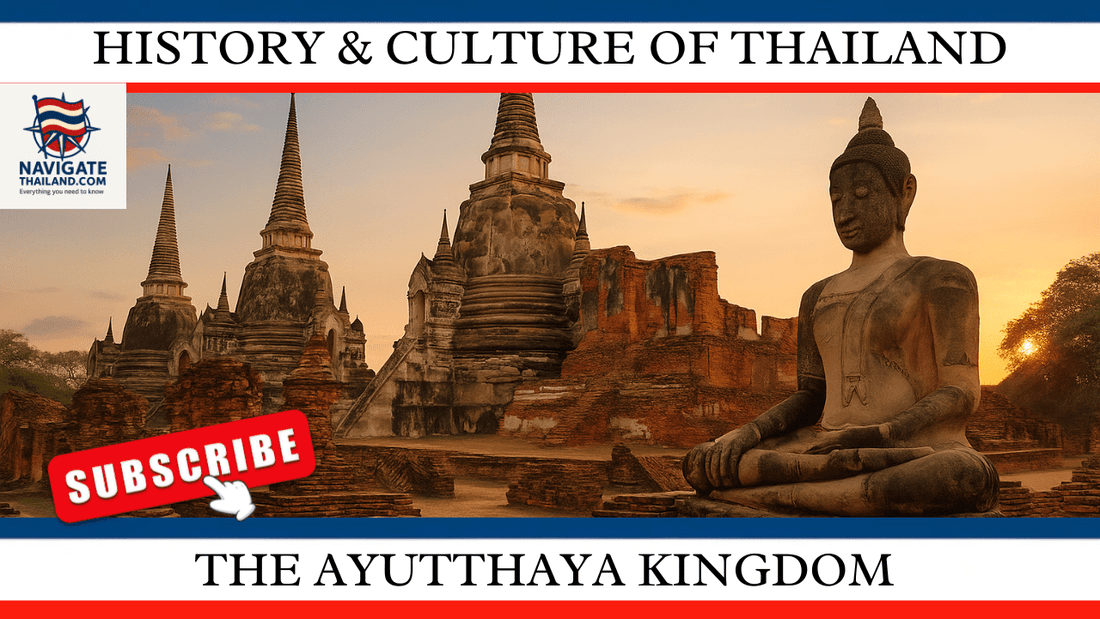
The Ayutthaya Kingdom: What Remains of Thailand’s Ancient Capital
Share
Once a Global Power, Now a Historic Treasure
From 1351 to 1767, Ayutthaya was the beating heart of Siam — a global trade hub, a political powerhouse, and one of the wealthiest cities in the world. Known to early European visitors as the “Venice of the East,” it hosted foreign diplomats, bustling markets, and towering golden temples.
Today, what remains is a hauntingly beautiful ruin, but one that still radiates the glory of its past.
THE RISE AND FALL OF A KINGDOM
Founded by King U Thong in 1351, Ayutthaya quickly grew into a dominant force in Southeast Asia, eclipsing rival kingdoms like Sukhothai and Lanna. With over 30 kings across five dynasties, it ruled for over four centuries before its devastating fall to the Burmese in 1767.
The invaders razed the city, looted its treasures, and left behind smouldering ruins. Yet even in ruin, Ayutthaya’s grandeur can still be felt today.
WHAT TO SEE IN AYUTTHAYA TODAY
Wat Mahathat
This is the image that defines Ayutthaya: the stone Buddha head entwined in Bodhi tree roots. Once a royal monastery, Wat Mahathat was the religious and political centre of the kingdom.
Fun fact: No one knows exactly how the Buddha head ended up in the roots — it may have rolled during the sacking or was placed there by devotees.
Wat Phra Si Sanphet
Formerly part of the royal palace grounds, this temple’s three iconic chedis (stupas) hold the ashes of Ayutthaya kings. Once covered in gold leaf, these structures were the most sacred in the kingdom.
Wat Ratchaburana
Famous for its crypt, which once held treasures and golden artefacts. While most were looted, the temple’s intricate stucco details and towering prang are still impressive.
Wat Chaiwatthanaram
On the riverbank, this Khmer-style temple complex is stunning at sunset. It symbolises the Buddhist universe and is one of the best-preserved structures.
Ayutthaya Historical Study Centre
Before diving into the ruins, this museum gives great context on Ayutthaya’s rise, global trade, and cultural legacy.
HOW TO GET TO AYUTTHAYA
- From Bangkok: Just 1.5 hours by train or van. Trains leave from Hua Lamphong or Bang Sue Station daily.
- By Boat: Cruise up the Chao Phraya River for a scenic route (great for day trips).
- On Arrival: Rent a bicycle or tuk tuk to explore the island and ruins. Most sites are within a compact area.
WHAT TO KNOW BEFORE YOU VISIT
✅ Entry to most temple sites costs 50–100 Baht per person.
✅ Dress respectfully: temples are sacred spaces. Cover shoulders and knees.
✅ Go early or late to avoid midday heat. Many temples open from 8am to 5pm.
✅ Consider hiring a local guide for historical insight (expect to pay 300–500 Baht/hour).
✅ Bring water, sunscreen, and a hat — Ayutthaya can get hot!
FUN FACTS ABOUT AYUTTHAYA
- By the 1700s, Ayutthaya had diplomatic ties with France, Portugal, Japan, and Persia.
- The city was built on an island at the confluence of three rivers, surrounded by canals for defence.
- It once housed over 400 temples and 1 million residents at its peak.
WHAT MAKES AYUTTHAYA A UNESCO WORLD HERITAGE SITE?
Ayutthaya was inscribed in 1991 for its outstanding cultural value. The ruins reflect the fusion of Khmer, Sukhothai, and foreign influences in architecture, city planning, and religious life.
It’s not just a Thai treasure — it’s a world treasure.
A DAY IN AYUTTHAYA IS A WALK THROUGH TIME
From the silent gaze of headless Buddha statues to the crumbling chedis silhouetted at sunset, Ayutthaya invites you to imagine the grandeur of ancient Siam.
History lives in every stone.
Travel Deeper with Navigate Thailand
Download our Thai History eBook, plan your visit with our Thailand travel guides, or bring Ayutthaya into your home with our exclusive temple wall art and posters.
This isn’t just sightseeing — it’s soul-seeing.






































































































































